GUEST BLOGGER DONNA MCKINNEY
This lesson plan combines the science with poetry as students learn about bioluminescent creatures by writing short poems called haikus.
What is bioluminescence?
Begin by asking students if they can think of creatures that carry light in their bodies. (lightning bugs/fireflies are a familiar examples.) Explain that deep in the ocean there are many creatures that produce light in their bodies. The word bioluminescence is the name for this ability that some creatures have for producing light. Explain that there is actually a chemical reaction that happens in the creature’s body that allows it to display light.
Learn about haikus
Explain to students that a haiku is a traditional Japanese poem with 3 lines. The poem has 17 syllables. So the 3 lines and 17 syllables are formatted this way:
- First line has 5 syllables
- Second line has 7 syllables
- Third line has 5 syllables
Explain that the haiku does not have to rhyme. A haiku can be funny or serious. Nature or animals are usually the subjects of these short poems.
Write a sample
To help students understand how haikus are written, choose the topic “elephant” and enlist them to help you write this sample haiku.
- Ask students to name the words that come to mind when they think of “elephant.” List the words on the board. (For example, your list might include: enormous, gigantic, ears, tusk, trunk, leathery, noisy, strong.)
- Lead students in writing a haiku about the “elephant.” (Some sample “elephant” haikus are listed just below.) Read the class haiku aloud, having students clap out the syllables, so they can understand the 5-7-5 syllable format.
Example 1
Enormous body
Flapping ears and pointy tusks
With a useful trunk
Example 2
Big ears tiny tail
Stepping loudly through jungles
The elephant moves
Example 3
Elephant parade
Trunks sway ears flap tails swinging
Giants passing by
If you want to give students more examples of haikus, do an internet search for “haiku examples for kids.” Lead them in reading aloud some of the haikus you find. Clap to count out the syllables as you read.
Read LIGHTS ON!
Explain that LIGHTS ON! is a book about deep ocean creatures that glow in the dark. Tell students that after you’ve read the book aloud, they will pick a topic from the book for their haiku. So as you read the book, they should be thinking about the different creatures and which one they want as a topic for their haiku. Explain that their topic can be one of the creatures described in the book (lanternfish, vampire squid, pocket shark, Atolla jellyfish, fireworms, viperfish, bomber worms) or the ocean itself.
Read LIGHTS ON! aloud to the students, showing them the illustrations as you read.
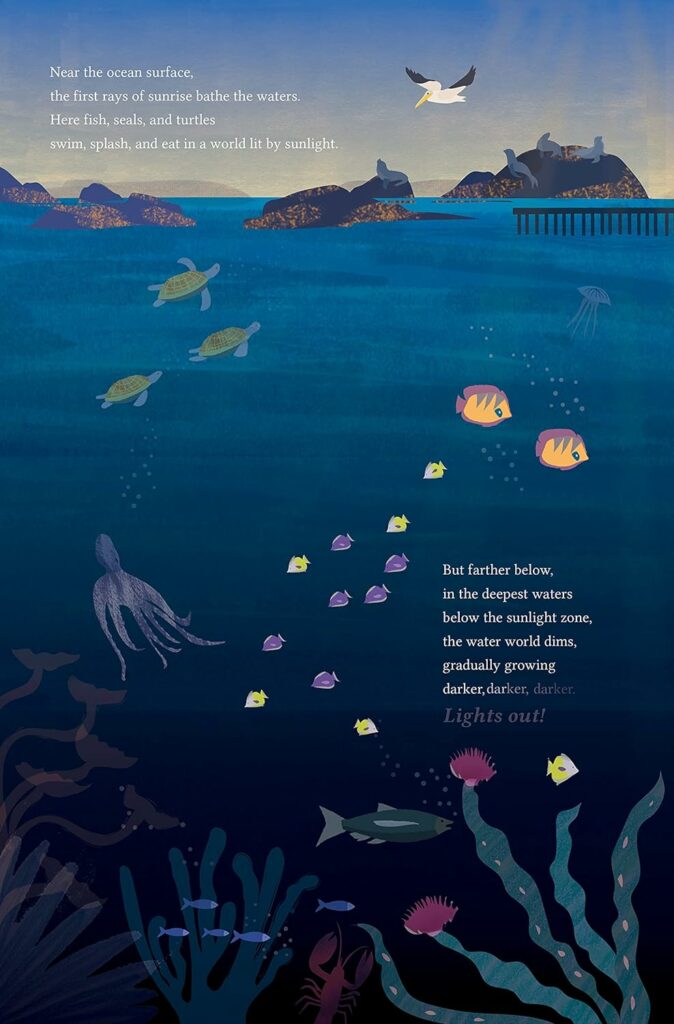
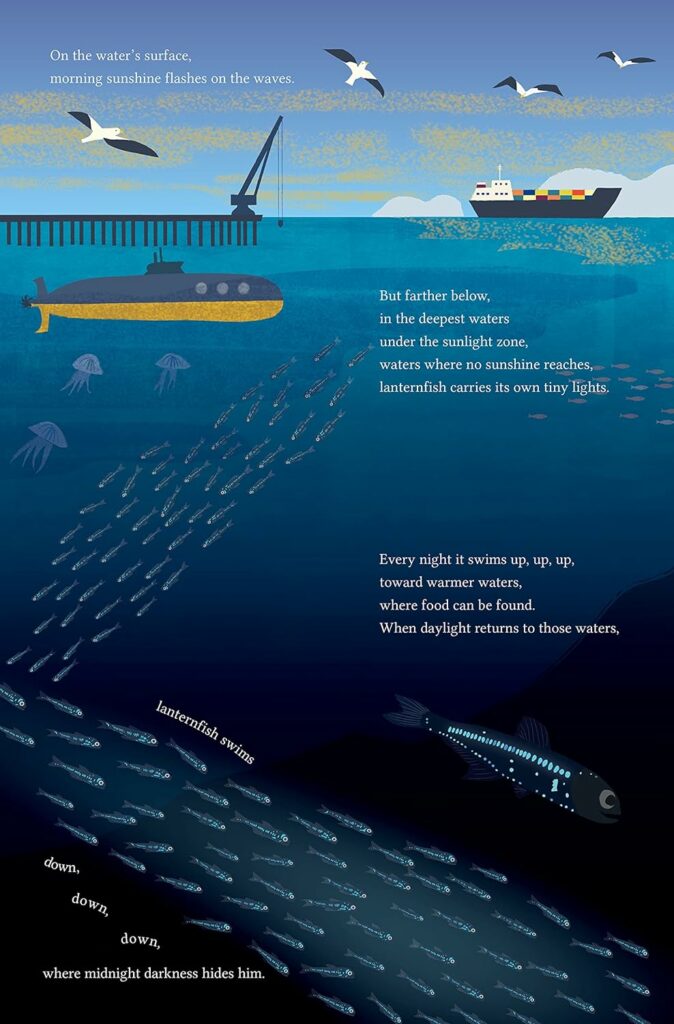
Write a haiku about LIGHTS ON!
Instruct the students to work alone or in pairs to write a haiku about one of the creatures in LIGHTS ON! (or a haiku about the deep ocean, in general). Begin by asking the students to make a list of words that they think of as they read about or look at the illustrations related to the creature they chose. (If you have multiple copies of LIGHTS ON! make them available to students so they can easily see the illustrations while they create their list of words.)
After the students have written a list of words related to their topic, instruct them to write a haiku, using the 3 line (5-7-5 syllable format). Encourage them to clap out the syllables as they write, if it helps them.
Cheer them on!
Encourage them to not be afraid to put words down on paper for their haiku and then revise it to make it better. Remind them that good writing often goes through many revisions.
Share
Instruct students to copy their haiku in large print (so it can be easily read). Call for volunteers who want to read their haiku aloud. Then display all the haikus on a bulletin board where the students can enjoy reading them.
Featured image credit: “Operation Deep Scope 2004: Eye-in-the-Sea Bioluminescence” by NOAA Ocean Exploration & Research is licensed under CC BY-SA 2.0.
Donna McKinney is the author of the book LIGHTS ON! Glow-in-the-Dark Deep Ocean Creatures (Yeehoo Press, 2023). She also writes kids books for educational publishers on STEM, sports, and current event topics. And she writes about science for adult readers on the science-news platform EurekAlert! In addition to writing, McKinney enjoys her grandchildren, hiking, jigsaw puzzles, and playing pickleball. She lives in North Carolina with her dogs. You can reach her at https://www.donnamckinneybooks.com/ on Instagram and Twitter @donnabmckinney and on Facebook @donnabowenmckinney.


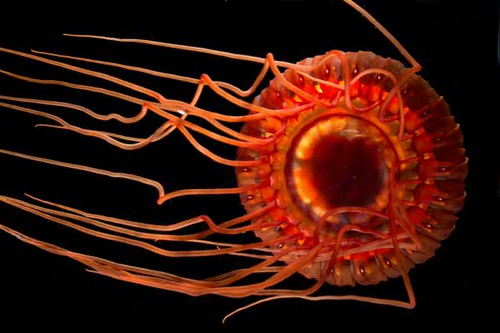

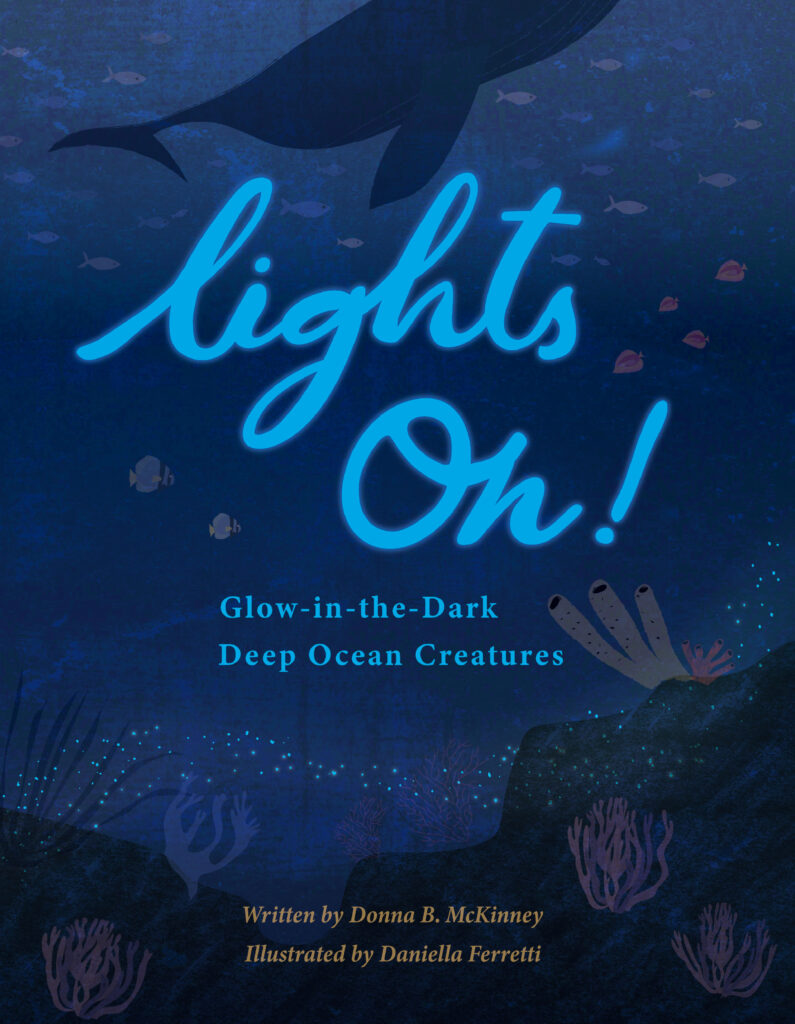


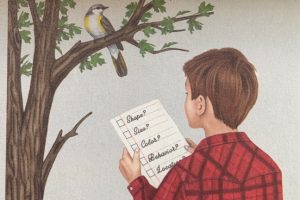


Leave a Reply
Your email is safe with me.